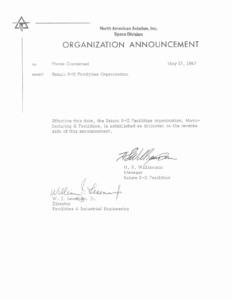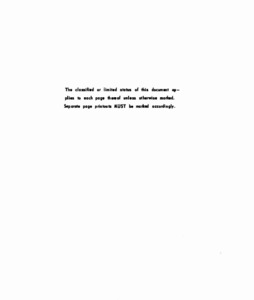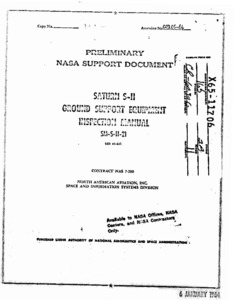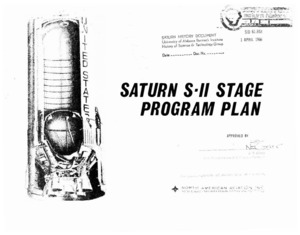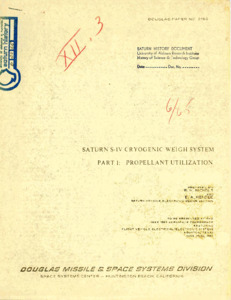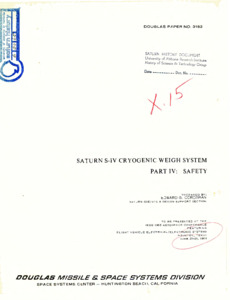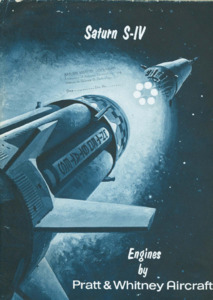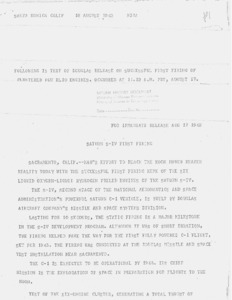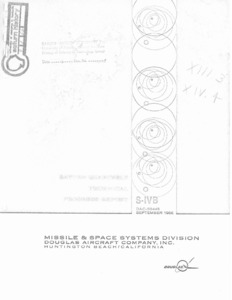
Browse Items (970 total)
Sort by:
-
"Saturn S-II facilities organization."
Organizational chart for the Saturn II facilities. -
"Saturn S-II general manual."
This manual contains information covering the second stage of the Saturn V launch vehicle. -
"Saturn S-II ground support equipment inspection manual."
This publication has been prepared to provide preliminary inspection requirements and limitations on all ground support equipment to support the Saturn II stage of the Saturn V launch vehicle. -
"Saturn S-II stage program plan."
This documents outlines the S & ID plan to fulfill the requirements of Contracts NAS7-80 and NAS7-200 for the design, development and manufacture of the Saturn S-II stage.; APPROVED by R E. Greer, Vice President and S-II Program Manager.; This reissue supersedes all previous issues of this report.; FOREWORD: The S-II stage is 81.5 feet in length and 33 feet in diameter, with a usable propellant capacity of 970,000 pounds, The S-II propellants are fully cryogenic-liquid oxygen at -279 F and liquid hydrogen at -423 F. Its five-engine cluster provides one million pounds of thrust. The stage is a cylindrical structure of relatively light weight with a shell designed to resist all loads without the use of stiffening members. Its skin is of welded aluminum panels, as are the elliptical bulkheads of the fuel and oxidizer tanks. Unique to its design is the common bulkhead that separates the -423 F liquid hydrogen from the -247 F liquid oxygen. The common bulkhead - a sandwich of two 33-foot diameter aluminum domes separated by an insulating filler of honeycomb - eliminates the weight penalty that would be imposed by the second bulkhead in more conventional design. This document describes the S & ID program plan for development of the S-II stage and associated a support equipment. -
"Saturn S-IV cryogenic weigh system. Part I : propellant utilization."
In order to achieve maximum vehicle efficiency, it is essential that the vehicle propellants be loaded to desired values and that these propellants approach simultaneous depletion at the end of powered flight. To accomplish precise loading and assure minimum residuals, a highly accurate and repeatable, vehicle located, propellant management (PM) or propellant utilization (PU) system must be used. As the ability to load propellants to predetermined values depends directly on the ability of the system to accurately sense the propellant masses, it is essential that the system be calibrated with respect to propellant mass under conditions resembling those to be experienced during final loading and powered flight. The use of a cryogenic weight system will reduce the unknown factors in capacitance sensor element shaping, tank geometry, and propellant properties to a degree which will permit the determination of propellant masses to with .025%. -
"Saturn S-IV cryogenic weigh system. Part II : weigh operations."
Two basic methods for mass determination are: (1) direct measurement, (2) volume and density determination. Both methods or variations have been used to determine space vehicle propellant mass with varying degrees of success. Stringent propellant loading accuracy requirements of k0.5 percent for the Saturn S-IV Stage have led to the development of a Cryogenic Calibration Weigh System. The method employs accurate electronic force transducers and measuring systems as the standard and experimental weighings have verified achievement of better than the required accuracy. -
"Saturn S-IV cryogenic weigh system. Part IV : safety."
During cryogenic weigh system operation, hydrogen when combined with oxygen can create an unsafe condition. Therefore the concentration of the residual oxygen and hydrogen from leaks in the cryogenic weigh environmental bags must be known at all times during the cryogenic weigh. Hydrogen and oxygen detectors will provide the optimum method for maintaining safe conditions. Hydrogen properties and safe mixtures are reviewed. The method selected to analyze the oxygen content is discussed. The selection, development, and testing of a hydrogen detector system is examined. -
"Saturn S-IV engines."
Folder of information. -
"Saturn S-IV first firing."
Press release detailing the firing of the Saturn S-IV in California. -
"Saturn S-IVB quarterly technical progress report."
Douglas Aircraft Company Report DAC-56445, Saturn S-IVB Quarterly Technical Progress Report, covers design and development progress on the Saturn IB and Saturn V configurations of the S-IVB stage during August and September 1966. This report is prepared for the National Aeronautics and Space Administration under Contract NAS7-101.
